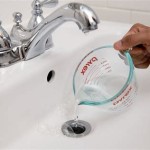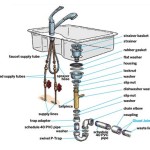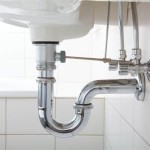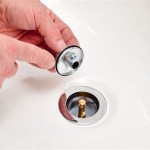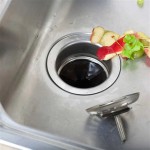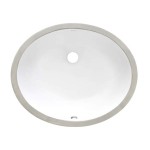How To Unclog A Sink Full Of Water
A sink full of standing water is a common household plumbing problem. It can be caused by anything from accumulated hair and soap scum to food particles and grease. While a completely blocked drain can be frustrating, most clogs can be addressed without the need for a professional plumber. This article provides a comprehensive guide on several methods to unclog a sink full of water, ranging from simple solutions to more involved techniques.
Before proceeding, it's important to understand the potential safety concerns. Chemical drain cleaners, while sometimes effective, can be hazardous. They contain corrosive substances that can damage pipes, cause skin irritation, and release harmful fumes. Consequently, mechanical methods are generally preferred as an initial approach. Moreover, protective gloves should be worn during all unclogging procedures to prevent contact with potentially contaminated water and materials.
Initial Assessment and Preparation
The first step in unclogging a sink involves assessing the situation. Observe the sink and the surrounding area. Note the rate at which the water is draining, if at all. This can provide clues about the severity and location of the clog. A slow drain suggests a partial blockage, while a completely stagnant sink indicates a significant obstruction.
Next, gather the necessary materials. These may include: rubber gloves, a bucket, a plunger (preferably a flat-bottomed sink plunger), baking soda, vinegar, a kettle or pot for boiling water, a wire coat hanger, a drain snake (also known as an auger), and screwdrivers (both Phillips and flathead). Having these items readily available will streamline the unclogging process.
Remove any standing water from the sink. This can be done using a bucket or a cup. Removing the bulk of the water allows for a clearer view of the drain opening and facilitates the use of a plunger. If the sink has a stopper, remove it to ensure it is not contributing to the blockage. Clean the stopper of any accumulated debris.
Employing the Plunger
The plunger is a fundamental tool for clearing sink clogs. It works by creating a pressure differential that dislodges the blockage. The flat-bottomed sink plunger is more effective than the flange plunger typically used for toilets, as it creates a better seal on the flat surface of the sink drain.
To effectively use a plunger, ensure there is enough water in the sink to cover the cup of the plunger. If the sink is completely empty after removing the standing water, add just enough water to cover the cup. A small amount of petroleum jelly applied to the rim of the plunger can help create a tighter seal.
Position the plunger directly over the drain opening, ensuring a complete seal. Apply firm, consistent downward pressure, followed by an upward pull. Repeat this plunging motion vigorously for several minutes. The goal is to create a vacuum that pushes and pulls on the clog, breaking it up and allowing it to drain. After several minutes of plunging, remove the plunger and observe if the water begins to drain more freely. If not, repeat the plunging process.
If the sink has an overflow drain, it is crucial to block it with a wet cloth or duct tape during plunging. This prevents air from escaping, maximizing the pressure generated by the plunger. The overflow drain often bypasses the primary drain trap, negating the effect of the plunging if it is not properly sealed.
Utilizing Baking Soda and Vinegar
Baking soda and vinegar create a natural chemical reaction that can help dissolve many common sink clogs. This method is less harsh than chemical drain cleaners and is often effective for clogs caused by grease, hair, and food particles. The combination produces carbon dioxide gas, which creates a bubbling action that can dislodge the blockage.
Begin by pouring approximately one cup of baking soda down the drain. Follow this with one cup of white vinegar. The mixture will immediately start to fizz and bubble. Allow the mixture to sit in the drain for at least 30 minutes, or preferably overnight for more stubborn clogs. The longer the mixture sits, the more time it has to break down the blockage.
After the waiting period, flush the drain with hot water. Ideally, use boiling water to further dissolve any remaining debris. Exercise caution when pouring boiling water into the drain, especially if the pipes are made of PVC, as excessive heat can potentially damage them. If using boiling water is a concern, very hot tap water can be used as an alternative, though it may be less effective.
Observe if the water is draining more freely. If the clog persists, repeat the baking soda and vinegar treatment. In some cases, multiple applications may be necessary to completely clear the blockage. After the treatment, follow with plunging to help dislodge any remaining residue.
Inspecting and Cleaning the P-Trap
The P-trap is a curved section of pipe located under the sink. Its primary function is to trap debris and prevent sewer gases from entering the house. However, it is also a common location for clogs to form. Inspecting and cleaning the P-trap can often resolve a blocked sink.
Before disassembling the P-trap, place a bucket underneath to catch any water and debris that may be trapped inside. This prevents a messy cleanup. Wear gloves to protect hands from contaminated water.
Loosen the slip nuts that connect the P-trap to the drain pipes. Use a wrench if necessary, but be careful not to overtighten or strip the nuts. Once the nuts are loosened, carefully remove the P-trap. Be prepared for water to spill out as the trap is disconnected.
Inspect the inside of the P-trap for any accumulated debris. Remove any visible obstructions, such as hair, soap scum, or food particles. A wire coat hanger or a small brush can be used to dislodge stubborn clogs. Rinse the P-trap thoroughly with water to ensure it is completely clear.
Reassemble the P-trap, ensuring that the slip nuts are tightened securely. However, avoid overtightening, as this can damage the pipes or the nuts. After reassembly, run water into the sink to check for leaks. If any leaks are detected, tighten the slip nuts further or re-seat the P-trap to ensure a proper seal.
Employing a Drain Snake (Auger)
A drain snake, also known as an auger, is a flexible tool used to break up or retrieve clogs that are located deeper within the drainpipe. It is particularly effective for removing hairballs and other debris that are difficult to dissolve or dislodge with other methods.
Insert the end of the drain snake into the drain opening. Carefully feed the snake down the drainpipe, rotating it as it goes. If resistance is encountered, continue rotating the snake to break up the clog or hook onto it. Avoid forcing the snake, as this could damage the pipes.
Once the snake has reached the clog, continue rotating it to thoroughly break it up or hook onto it. If the snake hooks onto the clog, carefully pull it back out of the drainpipe, along with the debris. Dispose of the debris properly.
Repeat the process as needed until the drain is clear. After removing the clog, flush the drain with hot water to ensure that all remaining debris is washed away. The drain snake can be a very effective method for clearing difficult clogs, but it requires patience and care to avoid damaging the pipes.
Alternative Methods and Considerations
In some cases, specialized tools and techniques may be necessary to unclog a stubborn sink. A wet/dry vacuum can be used to attempt to suck out the clog. Place the hose of the vacuum over the drain opening and create a tight seal. Turn on the vacuum and attempt to extract the blockage. This method is most effective for clogs that are close to the drain opening and are not tightly compacted.
Another option involves using a water pressure bladder. This device is inserted into the drainpipe and inflated with water, creating a powerful force that can dislodge clogs. However, it's important to use this tool with caution, as excessive pressure can damage pipes.
Preventive measures are crucial to minimizing the occurrence of sink clogs. Avoid pouring grease down the drain, as it solidifies and accumulates over time. Use a drain strainer to catch hair and food particles. Periodically flush the drain with hot water and baking soda to prevent the buildup of debris. These simple steps can significantly reduce the likelihood of future clogs.
If all attempts to unclog the sink fail, it may be necessary to consult a professional plumber. A plumber has specialized tools and expertise to diagnose and resolve more complex plumbing issues. Attempting to fix a more complicated problem without proper knowledge can potentially worsen the situation and result in costly repairs.

How To Unclog A Sink The Experts Simple Steps Drain

How To Remove Standing Water From A Clogged Sink

How To Unclog A Kitchen Sink That Is Full Of Water

How To Unclog A Slow Running Bathroom Sink Drain 10 Options
:max_bytes(150000):strip_icc()/how-to-unclog-a-sink-1824913-01-ea22a1b1d2cb4a46bc1829882f883987.jpg?strip=all)
How To Unclog A Sink Drain

How To Unclog A Sink

What Do You When Your Kitchen Sink Won T Drain

How To Unclog A Drain With Standing Water 12 Steps

How To Unclog A Kitchen Sink Youtube

Clogged Drains How To Prevent And Fix Them New Pipes Inc

